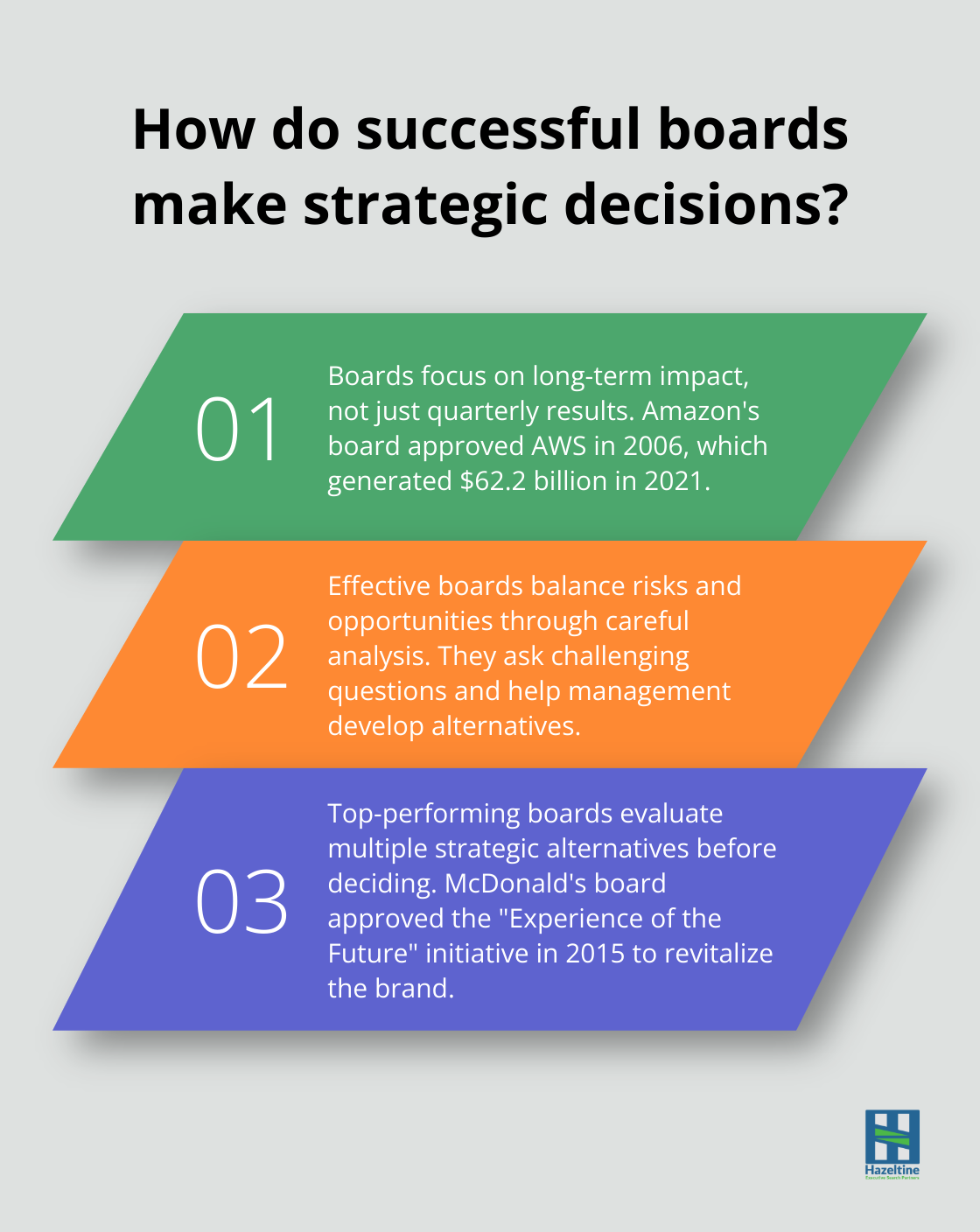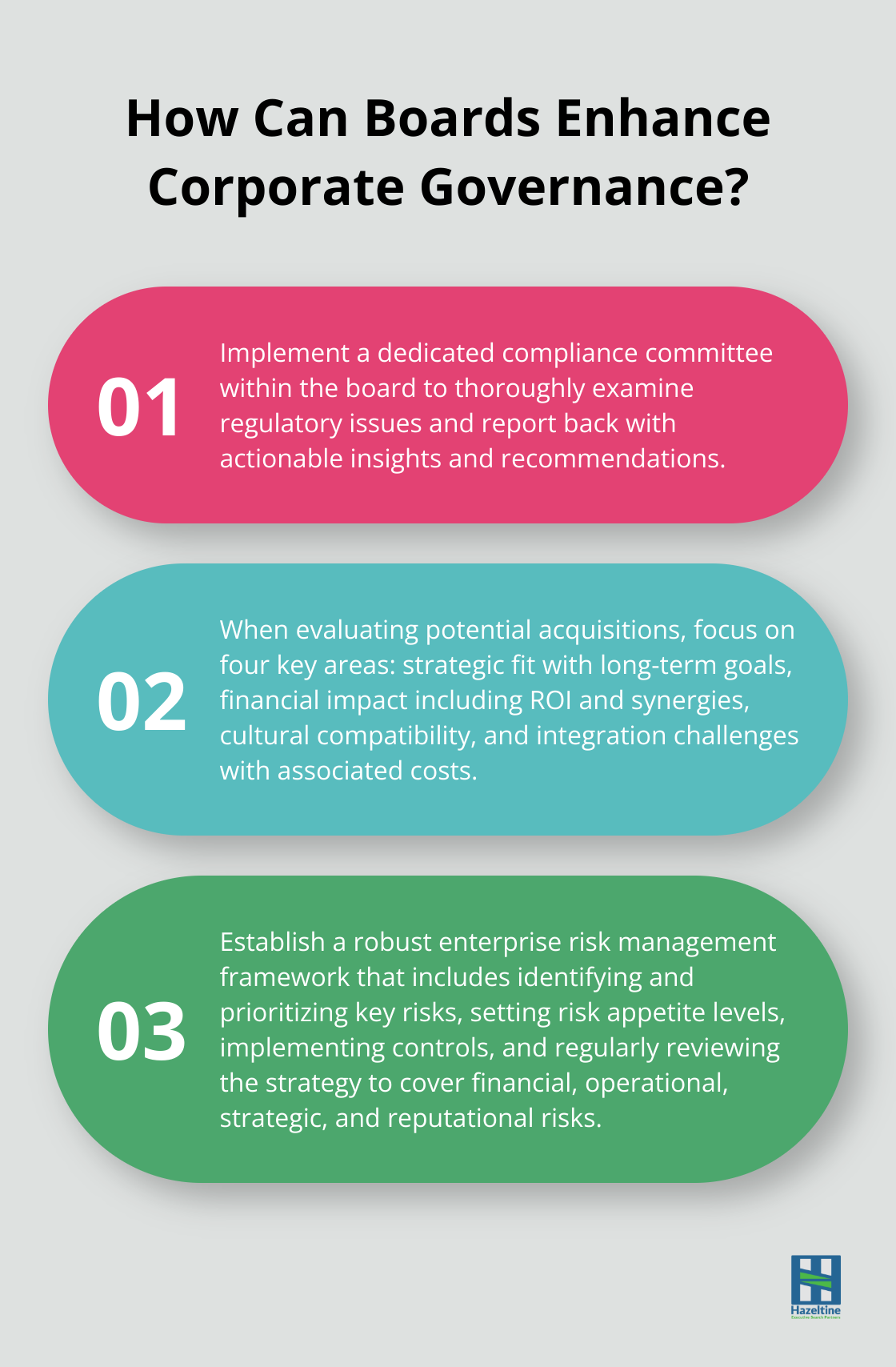As we begin a new year so too does the need to sharpen our skills and ability to communicate to our stakeholders. Success in the boardroom requires a unique set of skills.
Preparing for boardroom dynamics is essential for executives aiming to make a lasting impact.
Here we explore the critical abilities needed to thrive in this high-stakes environment, from strategic decision-making to effective communication and financial acumen.
Mastering Strategic Decision-Making in the Boardroom
Strategic decision-making forms the foundation of effective board leadership. This skill involves the analysis of complex situations, the anticipation of potential outcomes, and the ability to make informed choices that shape an organization’s future.
Embracing a Long-Term Perspective
Successful board members look beyond quarterly results. They consider how today’s decisions will impact the company five, ten, or even twenty years into the future. This forward-thinking approach requires a deep understanding of industry trends, technological advancements, and shifting consumer behaviors.

Amazon’s board demonstrated this foresight when they approved the development of Amazon Web Services (AWS) in 2006. They didn’t just focus on immediate market opportunities; instead, they envisioned a future where cloud computing would become integral to businesses worldwide. This strategic decision has since transformed AWS into a major revenue driver for Amazon (generating $62.2 billion in 2021, according to their annual report).
Navigating Risk and Opportunity
Effective board members excel at balancing potential risks with opportunities for growth. This involves careful analysis of market conditions, competitive landscapes, and internal capabilities.
Decision-making processes focus on asking challenging questions, playing devil’s advocate, and helping management come up with alternatives. This approach helps boards navigate the complex landscape of risks and opportunities.
Crafting and Evaluating Strategic Alternatives
Top-performing boards don’t settle for the first viable option. They actively develop and rigorously evaluate multiple strategic alternatives before making decisions.
McDonald’s board faced declining sales in 2015 and considered various turnaround strategies. They ultimately approved the “Experience of the Future” initiative, which included all-day breakfast, digital ordering kiosks, and menu simplification. This comprehensive approach has since revitalized the brand and improved financial performance.
Thriving Under Pressure
Board members must often make critical decisions under intense pressure and uncertainty. This requires a combination of analytical thinking, emotional intelligence, and the ability to remain calm in high-stakes situations.
During the 2008 financial crisis, JPMorgan Chase’s board had to decide whether to acquire Bear Stearns in a matter of days. Despite the immense pressure and potential risks, they approved the acquisition, which later proved to be a strategic move that strengthened JPMorgan’s market position.
The ability to make sound strategic decisions under various circumstances (including high-pressure situations) sets exceptional board members apart.
Mastering Boardroom Communication
Effective communication powers successful boardrooms. The most impactful board members excel not just in strategic thinking, but in their ability to convey complex ideas and foster collaboration.
The Art of Active Listening
Active listening underpins boardroom effectiveness. A Harvard Business Review study found that top executives of a major manufacturing plant in the Chicago area were asked to survey the role that listening plays in their work. This skill transcends mere hearing; it involves understanding the underlying messages, emotions, and motivations behind what’s said.
To improve active listening:
- Maintain eye contact and use non-verbal cues to show engagement.
- Paraphrase key points to ensure understanding.
- Ask clarifying questions to dig deeper into important issues.
Navigating Conflict and Building Consensus
Conflict is inevitable in high-stakes boardroom discussions. The challenge lies in managing it productively. A PwC survey of 500 public company directors concluded that boards might be evolving “too slowly to effectively meet the challenges facing companies today.”
To build consensus and manage conflict:
- Encourage diverse perspectives and create a safe space for dissenting opinions.
- Use data and objective criteria to evaluate different viewpoints.
- Focus on shared goals and common ground to bridge disagreements.
Starbucks’ board demonstrated effective conflict management during their 2008 turnaround. Despite initial disagreements, they united behind a strategy to close underperforming stores and refocus on the core coffee business, leading to a successful revival.
Persuasive Presentation Skills
The ability to present information persuasively influences boardroom decisions.
To enhance your persuasive presentation skills:
- Start with a compelling hook that grabs attention.
- Use concrete examples and data to support your arguments.
- Tailor your message to different stakeholder perspectives.
Fostering Open Dialogue
A culture of open dialogue is essential for board effectiveness.
To promote open dialogue:
- Establish ground rules for respectful communication.
- Rotate discussion leaders to encourage diverse participation.
- Use anonymous feedback mechanisms for sensitive topics.
Netflix’s board exemplifies this approach, with a culture of candid feedback that extends from the boardroom to all levels of the organization.
These communication skills form the foundation of boardroom success.
Navigating Financial Complexities in the Boardroom
Decoding Financial Statements
Board members must interpret financial statements quickly and accurately. A study found that nonprofit directors often lack a shared understanding of what good governance means. Successful board members focus on key performance indicators (KPIs) that truly matter to the company’s success.
For example, when evaluating a retail company, board members should prioritize metrics like same-store sales growth, inventory turnover, and customer acquisition costs. These KPIs provide insights into the company’s operational efficiency and growth potential.
Mastering Regulatory Compliance
The regulatory landscape constantly evolves, and board members must stay ahead of the curve. A survey found that 36% of respondents cited regulatory/compliance risk as among the three risk types that will increase the most in importance for their business. Successful board members proactively educate themselves on new regulations and their potential impact on the business.
One effective strategy involves the establishment of a dedicated compliance committee within the board. This group can thoroughly examine regulatory issues and report back to the full board with actionable insights and recommendations.
Evaluating Major Transactions
Mergers, acquisitions, and other significant transactions require careful scrutiny from board members. To avoid pitfalls, effective board members ask probing questions about synergies, integration plans, and potential risks.
When evaluating a potential acquisition, board members should consider:
- Strategic fit with the company’s long-term goals
- Financial impact (including projected ROI and potential synergies)
- Cultural compatibility between the two organizations
- Integration challenges and associated costs
Strengthening Risk Management
Overseeing risk management is a critical board responsibility. The 2008 financial crisis highlighted the dangers of inadequate risk oversight. Today, forward-thinking boards implement robust enterprise risk management (ERM) frameworks.
An effective ERM approach includes:
- Identification and prioritization of key risks
- Establishment of risk appetite and tolerance levels
- Implementation of controls and monitoring mechanisms
- Regular review and update of the risk management strategy
Board members should push for comprehensive risk reporting that goes beyond financial risks to include operational, strategic, and reputational risks.
In Conclusion
Preparing for boardroom dynamics requires a diverse skill set that combines strategic acumen, effective communication, and financial expertise. Successful board members make long-term decisions, navigate complex risks, and foster open dialogue. They interpret key performance indicators and evaluate major transactions with precision.

The rapidly evolving business landscape demands that executives refine these skills continuously. Board members who commit to ongoing learning and adaptation position themselves to make meaningful contributions in an ever-changing corporate environment. At Hazeltine Executive Search, we understand the unique challenges of identifying and developing boardroom-ready executives.
Our innovative recruitment process provides deeper insights into candidates’ abilities to thrive in high-stakes boardroom environments. We focus on matching top talent with the required skills and cultural fit essential for long-term success. Hazeltine Executive Search specializes in connecting exceptional leaders with organizations across various sectors, including Private Equity, Family Offices, and Energy.








